Peoria Audubon Society is a local affiliate of both:
National Audubon Society & Illinois Audubon Society

MSD Wetland Field Trip - Page 2 Back to Page 1
April 5, 2008
Photo Gallery
At lunchtime, we parked on a road between two lakes near the headquarters. Nearby mute swans put on a show for the group. Bert emphasized that mute swans were originally from Europe and not indigenous to the USA. In some areas, the mute swans are becoming a nuisance species in that they are so aggressive that they "push" native species out of their preferred nesting sites. The local population of mute swans seems to be increasing. At some point, action may be needed.

Mute Swan in Threat Display
At first a few of the birders thought the display was some type of breeding display. Dennis looked it up in the Sibley Field Guide to Birds and found that it was considered a "threat display" in which the swan raises its wings and "surges" across the water
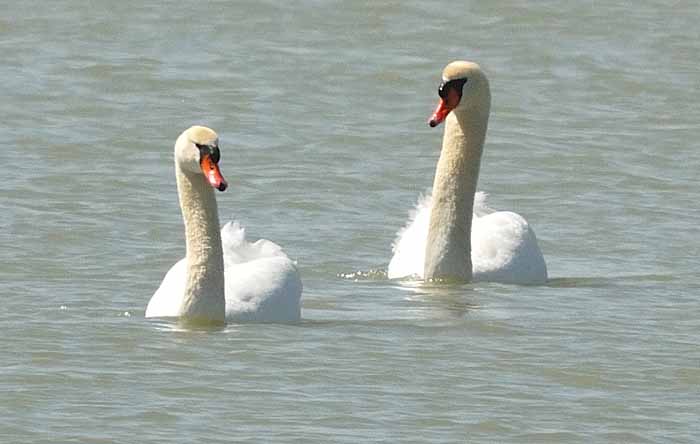
Pair of Mute Swans
The group found that the difference in the thickness of the swans necks to be amazing.
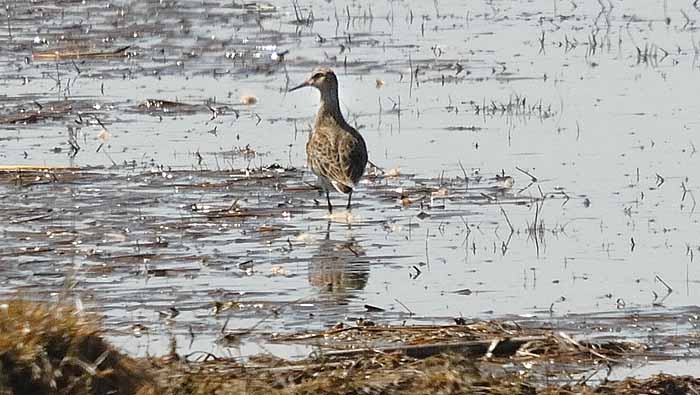
Pectoral Sandpiper
At the edge of the lakes where the mute swans were putting on their display, we found a couple of Pectoral Sandpipers working the edge for food. It took us a little while before we had good enough of a look to determine just what species they were. But, Bert indicated that his "final answer" was that they were the Pectoral Sandpiper.
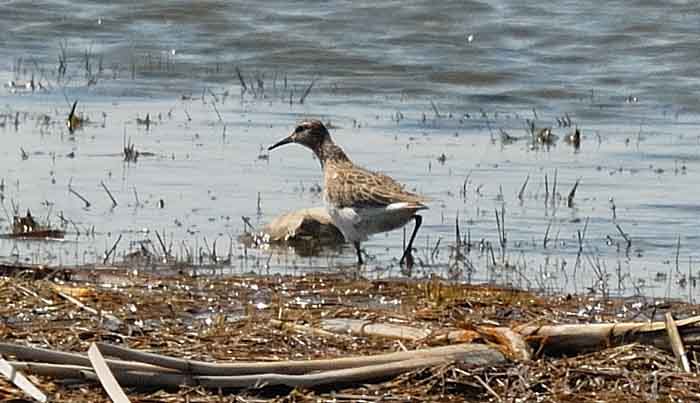
Pectoral Sandpiper
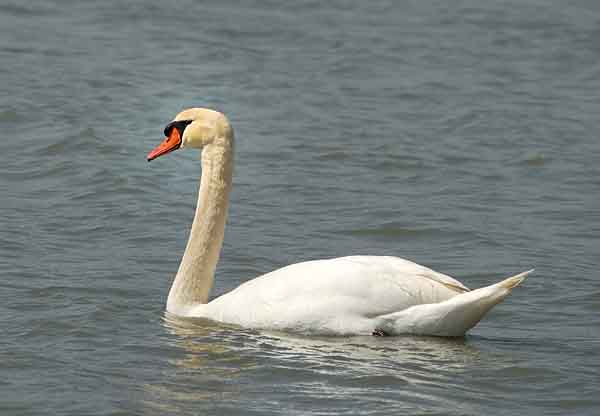
Mute Swan
While the group was looking at the pectoral sandpiper, one of the mute swans swam closer.
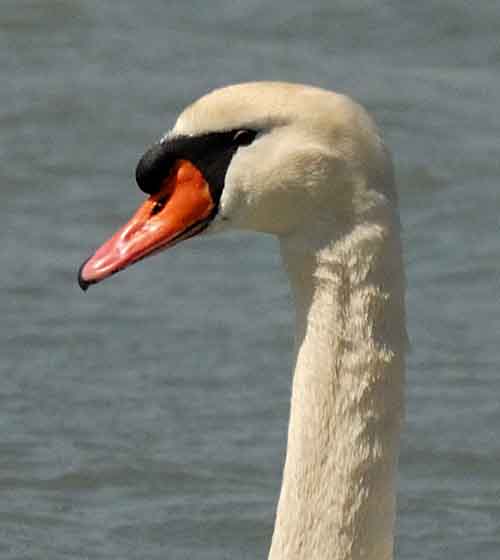
Close-up of Mute Swan
This allowed Dennis to get a closer photo that shows the distinguishing marks of this species. Note the unique orange bill.
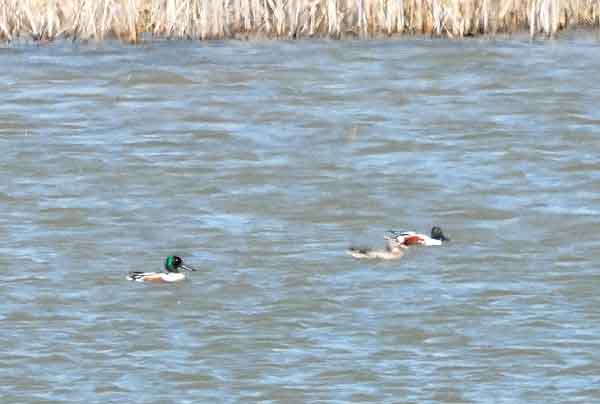
Northern Shovelers
At another nearby lake, we watched a few Northern Shovelers. Dennis explained to his group that these were the first duck species he learned to identify, primarily from their large beak.
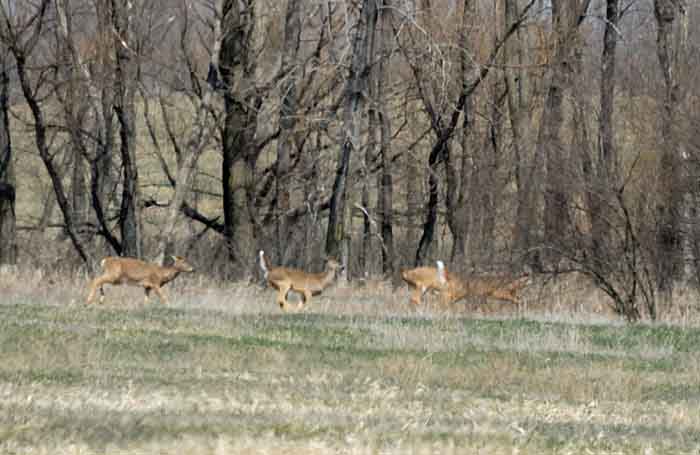
Herd of Deer
As we were moving along the road, in the distance, we watched a progression of 10-12 deer running for about a half mile.
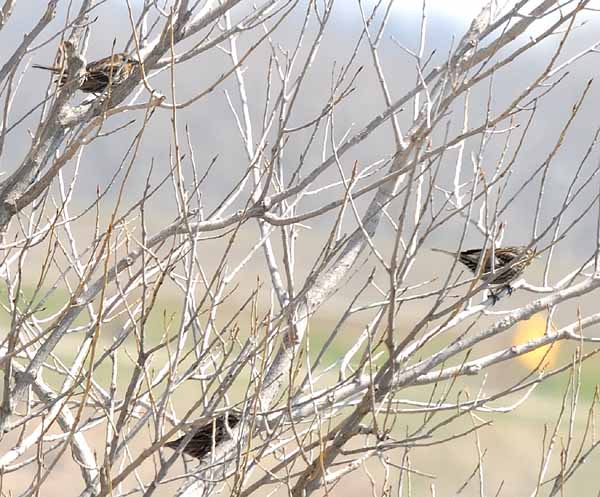
Savanna Sparrows
On a ridge, we spotted a few small sparrows in a tree, being buffeted by the wind. From the images, it is difficult to see the entire bird to make a positive ID.
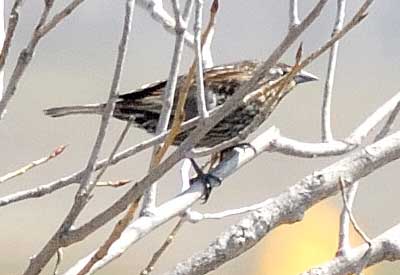
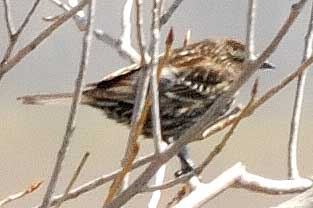
Savanna Sparrow - Two images of same bird in same place
Note that the above images are of the same bird in the same location, yet from the imagery, they almost look different. Ah, the difficulties of making a positive ID, when you can't see the entire bird. Dennis, Peoria Audubon's humble webmaster, noted that in the Sibley Field Guide the markings to look for are a whitish median crown-stripe, a white belly, a relatively short notched tail, is finely streaked, and slight yellowish lores. Unfortunately, the distance and tree branches makes the identification difficult. Send any comments or corrections to our humble webmaster.
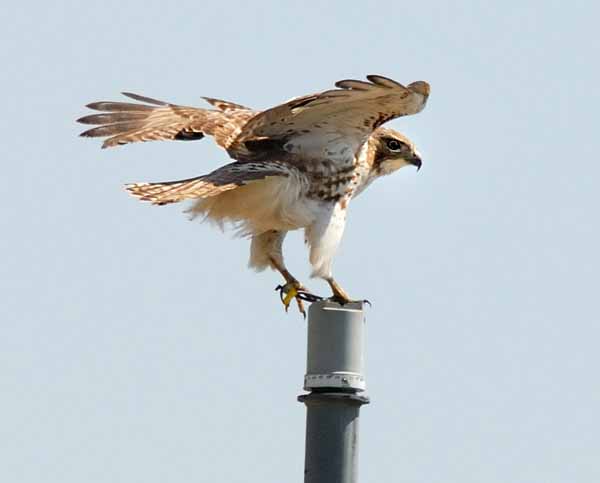
Red-tailed Hawk
As we drove past a ridge, a red-tailed hawk was just coming in for a landing on an abandoned lighting pole. Even though the hawk was perhaps 20-25 feet above the ground, on the ridge we were almost at the same height.
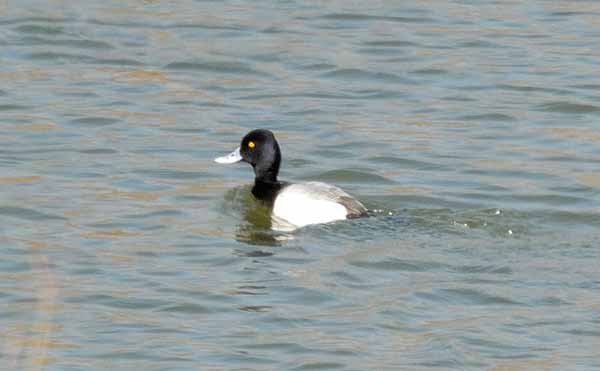
Lesser Scaup
In one of the latter lakes, a lesser scaup was close enough to the shore for a good photo
The Peoria Audubon Society wishes to thank the Metropolitan [Chicago] Water Reclamation District for the opportunity of visiting this remarkable wetlands.
As we were signing out to go home, our humble webmaster mentioned to one of the Security Guards that we saw a herd of 10-12 deer as we were driving through the facility. The guard said that around dusk, they typically will see 80-100 deer in small herds of 25-30. As we talked, he even described a once seeing a mountain lion. He indicated that with all the deer and coyotes, and the ban on hunting, potential predators would have plenty of food.